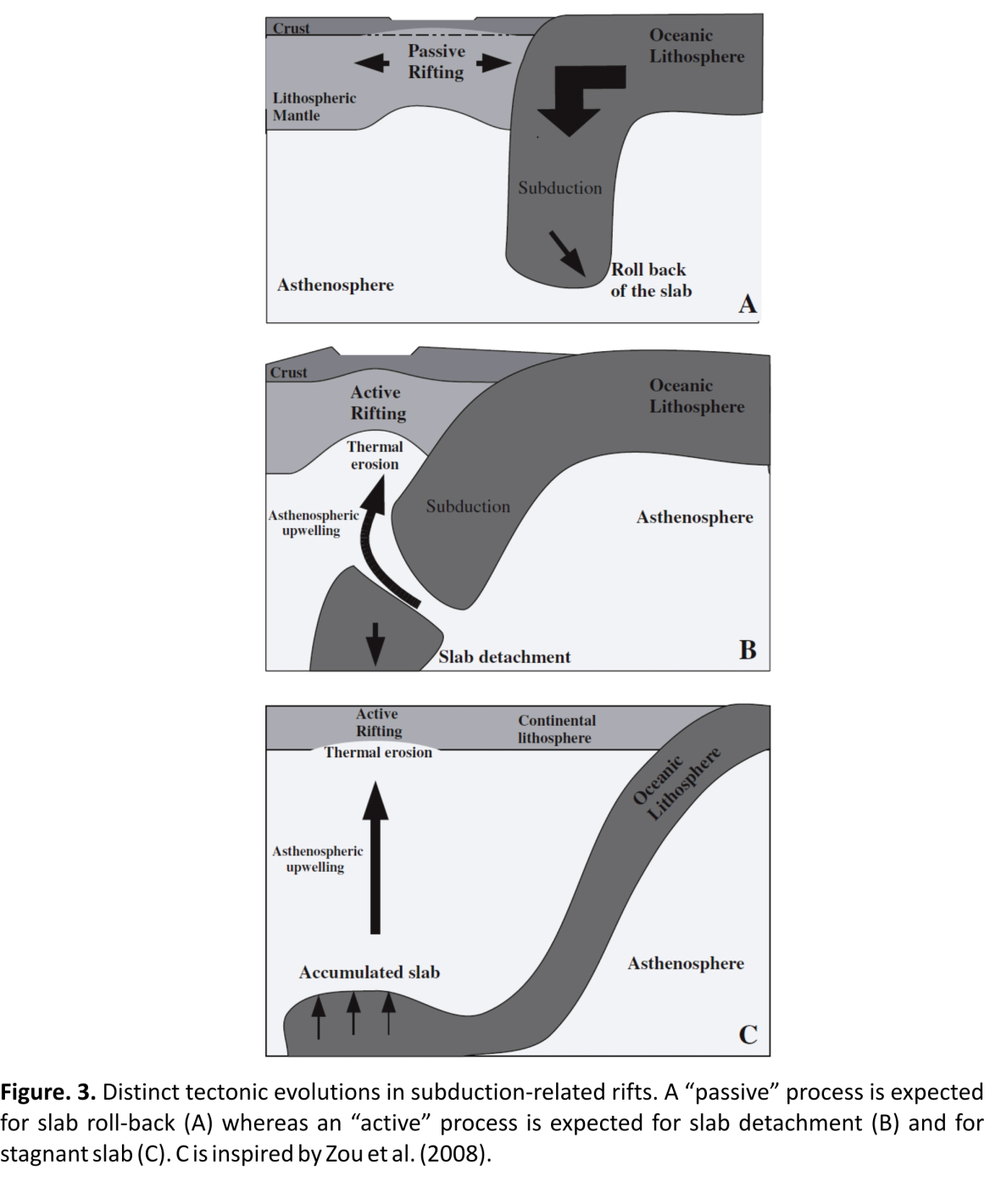Before we go deeper into the classifications of rifts, let's just refresh our memory to the previous article/post, incase you are just joining/reading for the first time, join us as we unravel earth's mysteries.
What are rifts?
They are elongate depression that have the thickness of the lithosphere deformed by the influence of exponential forces (Neumann & Ramberg 1978, Burchfiel, 1980). Rift therefore applies to major lithospheric features and does not encompass smaller scale structures associated with normal faulting.
Classification of Rifts
Continental rifts fall into these major categories which include the following:

Image source
• On Continental splitting, the precursor to the development of a new ocean is the development of a rift system that marks the locus of rupturing, E.g EAR System.
• If Continental splitting occurs by the catenation of series of R-R-R triple junction, the rift not utilized in rupture remains preserved within the continent as a failed rift or aulocogen.
• Continental collision imposes a large scale compressional regime in the vicinity of the juxtaposed continents.
The distinction between rifts generated by Continental rupture or collision is made by using such terms as mantle activated (or active) for the rupture and lithosphere activated (or passive) for the collision.
Mantle activated rifts are characterized by large volumes of extrusive rocks while lithosphere activated rifts usually contain greater abundance of immature clastic sediments than volcanic rocks.
Passive rifts may evolve into active rifts by the subsequent upwelling and spreading of the asthenosphere.
I. A normal fault develops in the upper crust under tensional stress.
ii. The fault movement warps the crust, its bending occasions maximum tension where the curvature is greatest.
iii. A second fault develops in this location with the establishment of a rift valley, continued tension causes continuous subsidence of the keystone, aided by the weight of sediments.
The rim rifts in the adjacent upper crust develops. Movements are accompanied by accompanied by compensatory flow in lower ductile crust.

Examples of rifts in the world
• The Asunción Rift in Eastern Paraguay.
• Throughout the Basin and Range Province in North America.
• The Baikal Rift Zone, the bottom of Lake Baikal is the deepest continental rift on the earth.
• The East African Rift.
• The Fundy Basin, a Triassic rift basin in southeastern Canada.
• The Gulf of California.
• The Gulf of Suez Rift.
• The Red Sea Rift.
• The Rio Grande Rift in the southwestern US.
• The rift zone that contains the Gulf of Corinth in Greece.
• The Reelfoot Rift, an ancient buried failed rift underlying the New Madrid Seismic Zone in the missisisipi embayment.
• The Rhine Rift, in south western Germany, known as the Upper Rhine valley, part of the European Cenozoic Rift System.
• The Mid-continent Rift System, a late Precambrian rift in Ventral North America.
• The Midland Valley in Scotland.
• The Narmada Rift valley in peninsular India.
• The Northern Cordilleran Volcanic Province in British Columbia, Yukon and Alaska
• The Taupo Volcanic Zone in the north east North Island of New Zealand.
• The Oslo Graben in Norway.
• The Ottawa-Bonnechere Graben in Ontario and Quebec.
• The West Antarctic Rift in Antarctica
• The West and Central African Rift System.
Source

Economic Importance of rift
Rifts are very important to the hydrocarbon inndustry, as well as the mineralogy & extraction industry, rifts host several mineral (Sedex are a major source of minerals including copper, silver, gold and tungsten) and hydrocarbons (Oil and Gas).
Sedimentary rocks are mostly associated with continental rifts, and they host important deposits of both minerals and hydrocarbons like;
Hydrothermal mineral
Sedex mineral deposits are found mainly in continental rift settings like (Gold, copper, silver and tungsten).
Hydrocarbons
Continental rifts are the sites of significant oil and gas accumulations, such as the Viking Graben and the Gulf of Suez Rift.
Reservoir rocks may be developed in pre-rift, syn-rift and post-rift sequences. Effective regional seals may be present within the post-rift sequence if mudstones or evaporites are deposited. Read more?

References:
•Link
•Link
•link

Read recent articles :
https://steemit.com/geology/@barineka/continental-rifts
https://steemit.com/geology/@barineka/theories-behind-the-origin-of-the-moon
https://steemit.com/geology/@barineka/geologic-history-of-the-moon
https://steemit.com/geology/@barineka/lunar-geology-part-1
https://steemit.com/geology/@barineka/the-mechanism-behind-plate-motion

Wanna earn more join today
.jpeg)
Click here to proceed

Join sola today, post pictures and earn, click on this





Keep up the good work and educating the world with this! Cool figures! One could argue that without Rifts, in particular from east africa, we wouldn't be here!
Downvoting a post can decrease pending rewards and make it less visible. Common reasons:
Submit
Thank you!
Downvoting a post can decrease pending rewards and make it less visible. Common reasons:
Submit
Very cool. A great example of tectonic plate shifting and rifts can be seen in Colorado springs, Colorado.
Downvoting a post can decrease pending rewards and make it less visible. Common reasons:
Submit